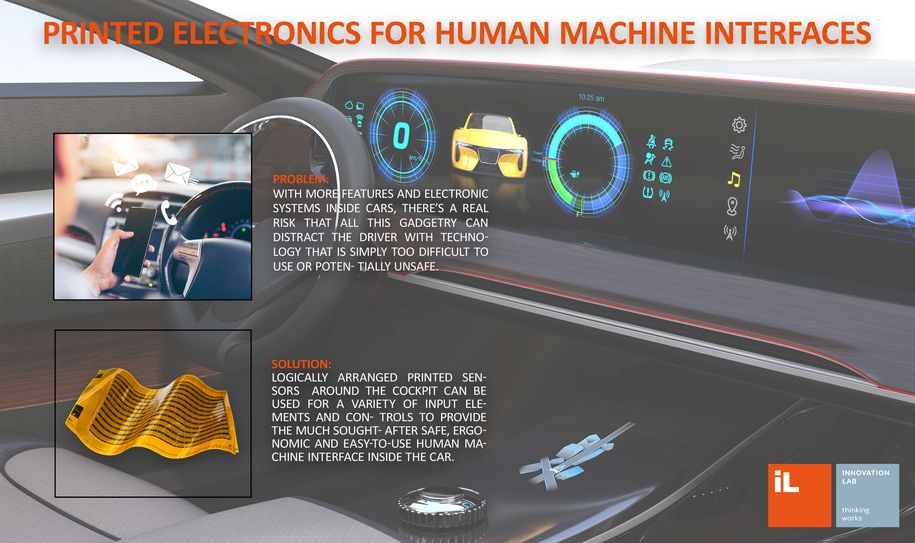![[Translate to English:] Human Machine Interface](/fileadmin/_processed_/b/b/csm_Title_HMI_f1f6e0fe18.jpg)
SAFE ON THE ROAD
Carmakers are increasingly turning to printed electronics to create the much sought-after safe, ergonomic and easy-to-use human machine interface (HMI).
Human Machine Interface (HMI): How printed sensors put the driver back in control
It goes without saying that today, any new car that you buy, will get you from A to B safely, quickly, and efficiently. Which is great for consumers but it also means that it is becoming increasingly difficult for companies to make their cars stand out against the competition.
In an attempt to differentiate their vehicles, carmakers are putting a greater focus on the driver and passenger experience. One way to get ahead of the pack is to add more features and electronic systems. So now we connect our smartphone to the car via Bluetooth for music and navigation, and wish to intuitively control every imaginable system parameter in minute detail.
There is, however, a real risk that all this gadgetry can overwhelm the car’s occupants with technology that is simply too difficult to use or potentially unsafe. In consumer devices, touchscreens have taken over our world, however, inside a vehicle they are perhaps not the optimal solution. They can be quite distracting as they require the user to focus on the display. But as drivers, we need to keep our eyes on the road, whilst being able to control everything safely and conveniently. In place of ubiquitous touchscreens, the controls should be logically arranged around the cockpit to make life simpler, driving safer and the experience more satisfying.
Carmakers are increasingly turning to printed electronics
With printed electronics the much sought-after safe, ergonomic and easy-to-use human machine interface (HMI) can be easily integrated inside a vehicles. Printed sensors can be used for a variety of input elements and controls, such as buttons, linear or circular sliders, and all sorts of more complicated shapes, such as three-dimensional window switches or volume controls.

The printed electronics sensors can provide far more than just a simple on/off button, with FSR (force-sensing resistor) technology it can be used to measure the pressure being applied by a user on a control element. Printed sensors also open up many more options for the designer to incorporate sensing elements in places where switches would simply not be feasible, e.g. in the fabric covering of a centre console, whilst providing significantly more sophisticated controls such as gesture recognition.
Printed electronics is an affordable solution for the car interior, typically costing less than mechanical switches. FSR sensors are also generally cheaper than capacitive alternatives and can be used with simpler drive electronics.
As our cars continue to include ever more functions and systems, as self-driving capabilities increase, we still need to stay in control – and printed sensors will be there to help us to do just that!
